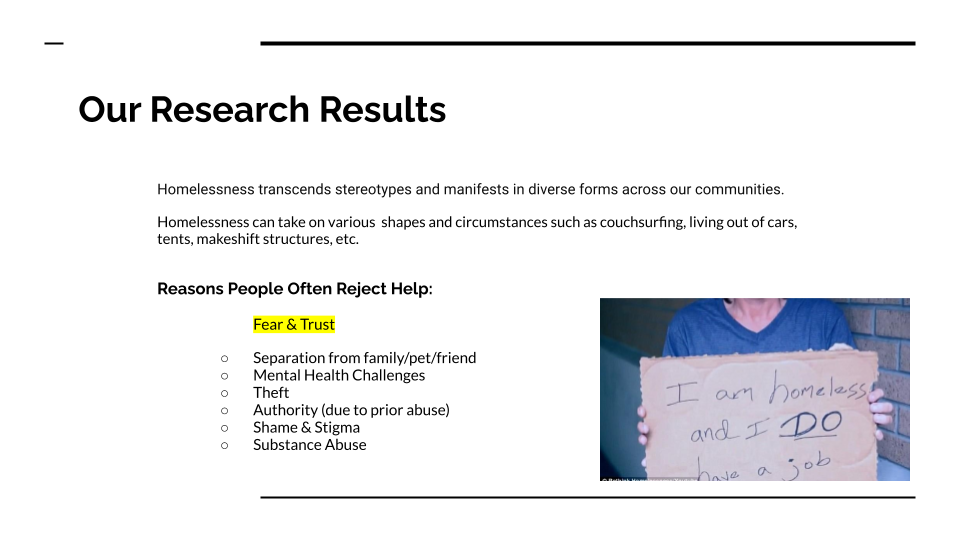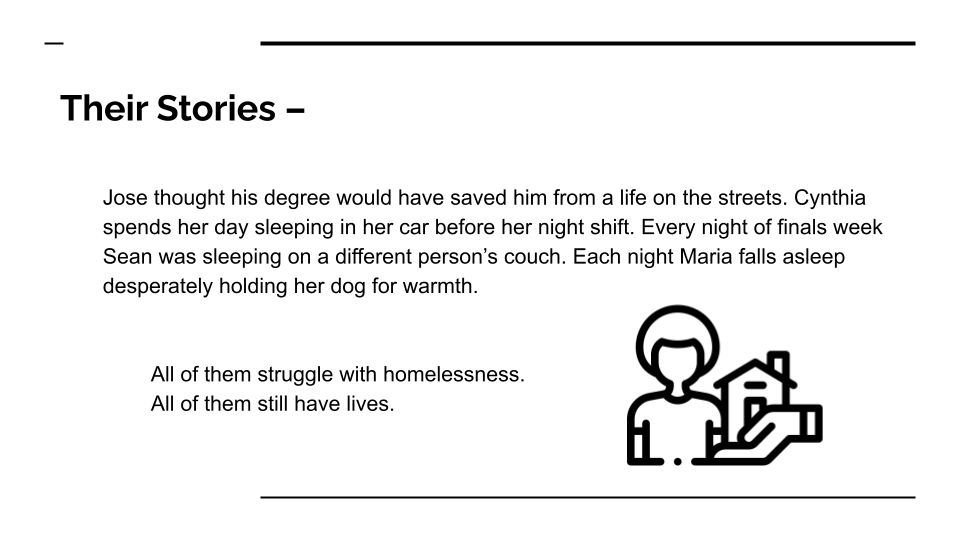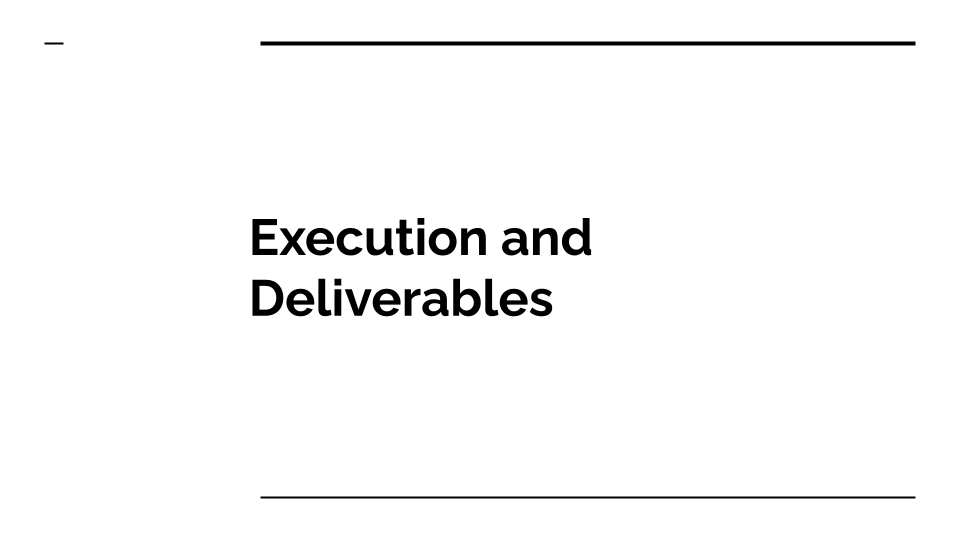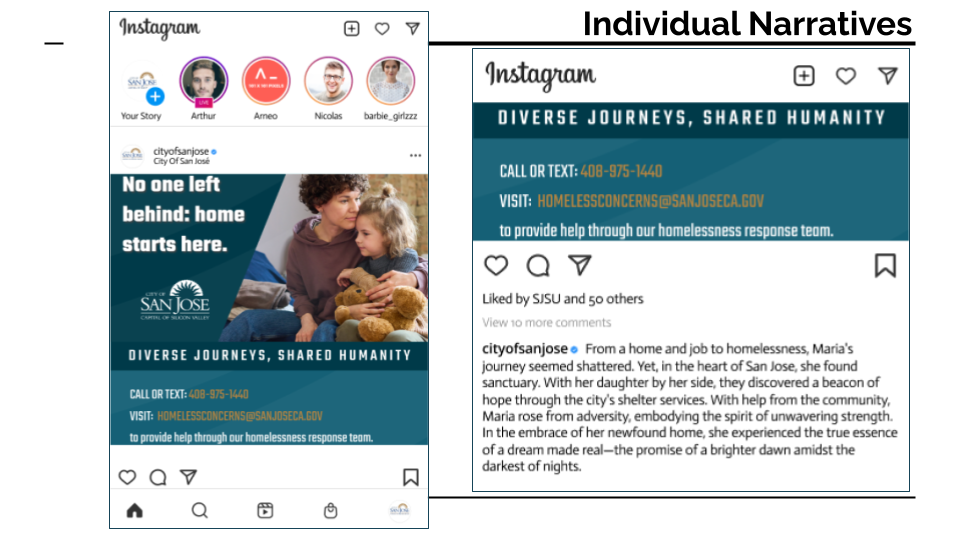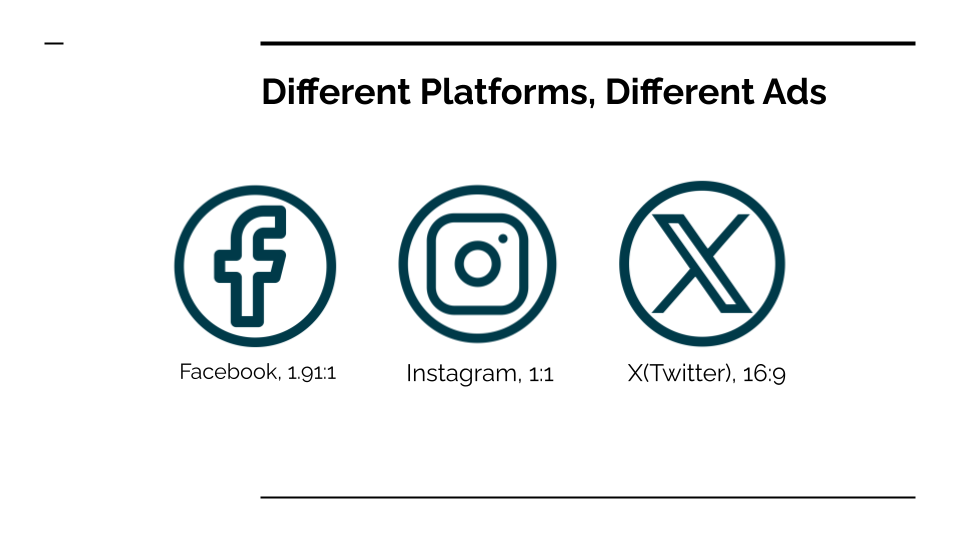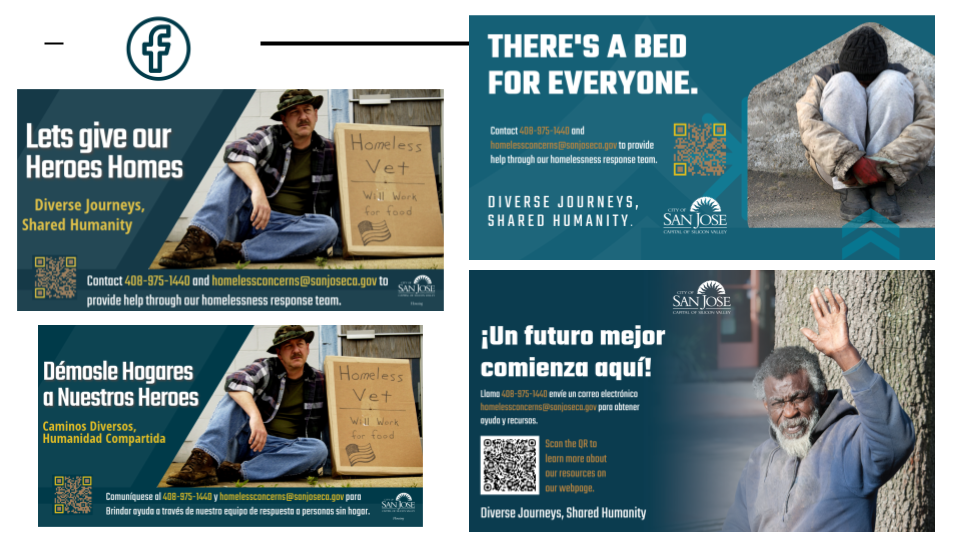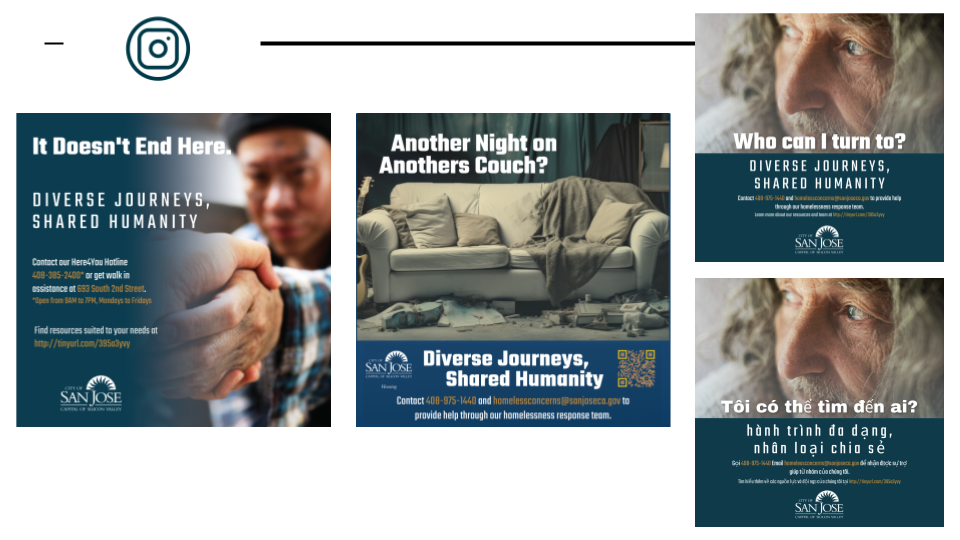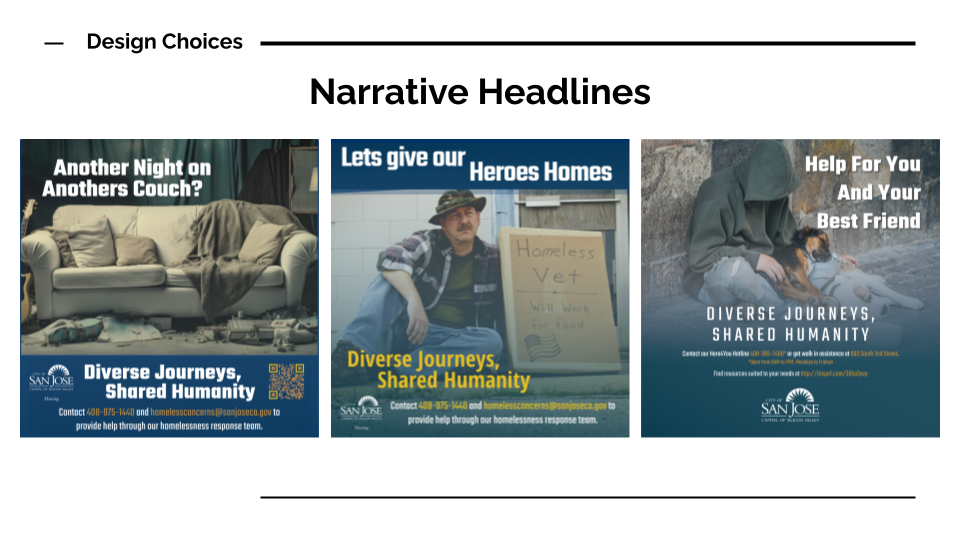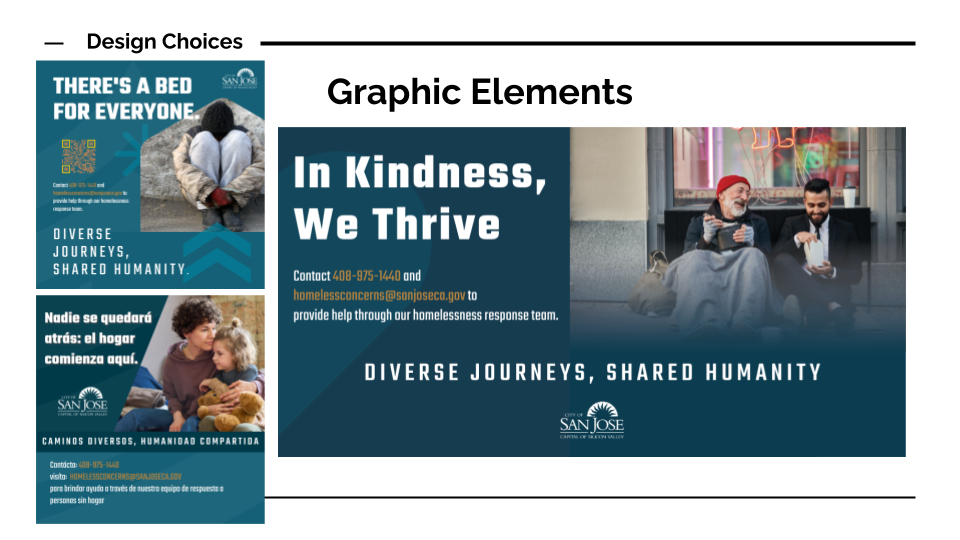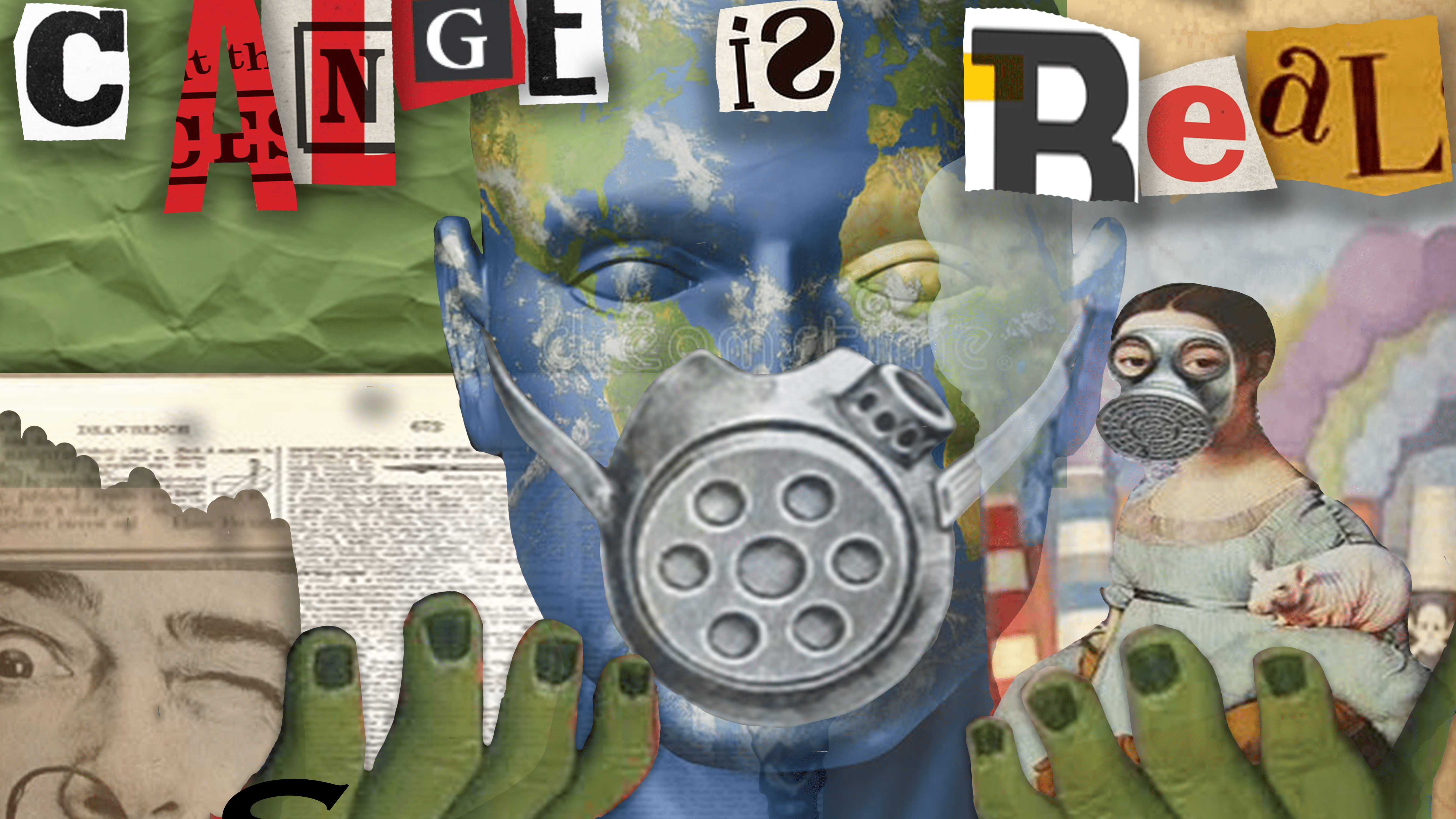This project involved creating a strategic social media communications campaign focusing on one of two initiatives provided by the City of San Jose Housing Department: Humanizing Homelessness or Educating Residents About Rent-Stabilized Apartments. The project was fast-paced and competitive, with two groups of two teams each working on one initiative and ultimately competing to win their category. We were given about 2 weeks to complete this project.
My group tackled Humanizing Homelessness. Our task was to develop a social media creative strategy and executions, as well as pitch our ideas to the city team, who would select a winning concept for each initiative, ultimately bringing the campaign to life in the real world. Throughout the process, we conducted research, identified insights, developed a central idea, and executed a plan to a high standard.
We delved deep into the topic of homelessness to gain a better understanding before addressing it. The strategic communications plan targeted audiences on Facebook, Instagram, and Twitter through at least 8 graphics. Each graphic or post was required to cater to the specific audience of the platform and could be presented in four main languages: English, Spanish, Vietnamese, and Chinese. While translation was not required, creating imagery that appealed to each language audience was crucial for this assignment.
Upon presenting our campaign to the City of San Jose, I am thrilled to announce that my group and I proudly won the "Humanizing Homelessness" category. We are excited to continue our collaboration with the City of San Jose, taking further steps to bring our campaign to life while supporting the cause to address homelessness in San Jose.
Process
Brainstorming & Research
Our Questions:
- What would be considered as successful in campaigns past related efforts that City of SJ and similar cities have tried? Why were they successful?
- How can we design a graphic that effectively communicates with speakers of different languages without relying on translation? (since translation is not required but we have to create graphics that target 4 different languages)
- What are some misconceptions about homelessness that the general public has that we can address in the campaigns?
- What are the main causes of homelessness in the Bay Area (San Jose)?
- What are some underlying factors that contribute to homelessness so we can educate others to encourage empathy and understanding?
- What are the age groups/race/gender when it comes to those who are experiencing homelessness in sj?
- Is there potential legislation (or new ones being made) that residents of San Jose can advocate for that will improve the conditions of the homeless?
- Common causes of chronic homelessness in sj - From most to least: unaffordable rent, no job/income, no housing available, no money for moving costs, housing process too difficult
- What did previous sj homelessness campaigns look like, if any
- How can we use our research to inform the campaign without minimizing the homeless to a statistic?
What solutions were executed or proposed? Why did they work/not work?
Homelessness Prevention and Rapid Re-Housing Program (HPRP), SJ received over 4 mil for the program
- Funding could be used for security payment deposits, rental assistance(3-18 mo), assistance with paying utility bills(if it would lead to homelessness), moving cost assistance, hotel vouchers
- Funding is not really the key issue, it’s the lack of affordable housing as there’s not enough to go around
- There is progress being made, albeit slow - Cristina Smith recently moved into one of the new affordable units in Los Angeles. After five years without a home she had, like many, given up hope. “I thought it was fake,” she told CNN affiliate KCBS. “Until they gave me the keys and then I was like this is real. You don’t believe it after a while.”
What does humanizing homelessness mean?:
Humanizing homelessness refers to the act of recognizing and acknowledging the humanity and dignity of individuals who are experiencing homelessness. It involves seeing beyond the circumstances of homelessness and recognizing the person behind the situation, with their own unique experiences, challenges, and aspirations
Humanizing homelessness is about recognizing the shared humanity of all individuals and working towards a society where everyone has access to safe and stable housing and the opportunity to thrive. It involves compassion, respect, and a commitment to addressing the systemic issues that contribute to homelessness
Misconceptions/Stigma surrounding homelessness
- Mental illness is a driving force behind homelessness, but it’s important to consider that it could lead to homelessness, but homelessness also can lead to/exacerbate mental illness
- Society tends to blame residents who experience homelessness. Many people characterize them as lazy, uneducated or lacking ambition. Society assumes people struggling with homelessness did something that created problems in their lives. — This attitude shows a lack of empathy, understanding, education, and awareness.
- Some bystanders believe people without homes prefer to live in cars, hotels or on the streets. They assume they like a more independent lifestyle.
- Homelessness is optional
- Homeless individuals are dangerous or criminals.
- People usually don’t think of individuals living in their cars, or couch-surfing as homeless
Why is there a need for Humanizing Homelessness?:
- Dignity and Respect: Homelessness strips individuals of their dignity and humanity. Humanizing homelessness recognizes that every person experiencing homelessness is a human being deserving of dignity, respect, and compassion. It emphasizes the importance of treating homeless individuals with empathy and understanding rather than judgment or indifference.
- Combatting Stigma: There is often a stigma associated with homelessness, which can lead to discrimination, social exclusion, and barriers to accessing services and support. Humanizing homelessness aims to challenge stereotypes and misconceptions by highlighting the complex and diverse experiences of homeless individuals. By humanizing their stories and struggles, we can break down stigma and foster empathy and solidarity within communities.
- Advocacy and Policy Change: Humanizing homelessness can be a powerful tool for advocacy and policy change. By amplifying the voices of homeless individuals and sharing their stories, we can raise awareness about the systemic issues that contribute to homelessness, such as lack of affordable housing, poverty, and inadequate social support systems. Humanizing homelessness can mobilize public support for policy solutions that address the root causes of homelessness and improve access to housing, healthcare, and supportive services.
- Empowerment and Self-Advocacy: Humanizing homelessness empowers homeless individuals to share their own experiences, challenges, and aspirations. By giving them a platform to speak out and advocate for themselves, we recognize their agency and resilience. This can help build self-confidence, foster a sense of belonging, and empower homeless individuals to take control of their own lives and futures.
- Building Connections and Solidarity: Humanizing homelessness encourages communities to come together in support of homeless individuals and families. By recognizing our shared humanity and interconnectedness, we can build bridges of empathy and understanding. Humanizing homelessness fosters a sense of solidarity, encouraging individuals, organizations, and policymakers to work collaboratively to address homelessness and create a more inclusive and compassionate society.
Humanizing Homelessness can be practiced by:
- Respect and empathy: Treat individuals experiencing homelessness with respect and empathy, acknowledging their inherent dignity and worth as human beings.
- Listening and understanding: Take the time to listen to the stories and experiences of individuals experiencing homelessness without judgment or assumptions. Seek to understand their challenges, needs, and aspirations.
- Language and framing: Use language that respects the humanity of individuals experiencing homelessness. Avoid stigmatizing or dehumanizing language and instead focus on people-first language that emphasizes the individual rather than their circumstances.
- Advocacy and support: Advocate for policies and initiatives that address the root causes of homelessness and provide support and resources to individuals experiencing homelessness. This may include affordable housing, mental health services, job training programs, and access to healthcare.
- Community engagement: Engage with the broader community to raise awareness about homelessness, challenge stereotypes and misconceptions, and foster empathy and understanding.
- Collaboration and empowerment: Work collaboratively with individuals experiencing homelessness to empower them to regain stability and autonomy in their lives. This may involve providing access to resources, support services, and opportunities for education and employment.
Goals?
- Reframing the narrative to focus on the homeless individuals as victims rather than the problem itself
- Portraying homeless individuals as relatable human beings. This can be achieved through interviews with diverse homeless individuals, where they share their personal stories and experiences leading to their current situation. By hearing real stories, we aim to evoke empathy and understanding among the audience.
- Educate audiences on the complex reasons behind homelessness is crucial. It's important to emphasize that homelessness is not always the result of personal failure. Factors beyond a perdons control such as Low-paying jobs, lack of affordable housing, abusive relationships, mental illness, or costly medical emergencies can rob someone of his or her security in a matter of days or weeks. By increasing awareness of these underlying causes, we can challenge stereotypes and misconceptions, fostering greater compassion and support for those experiencing homelessness.
- Confront the stigmas associated with being homeless
- Make people care about homelessness
Similar Campaign examples:



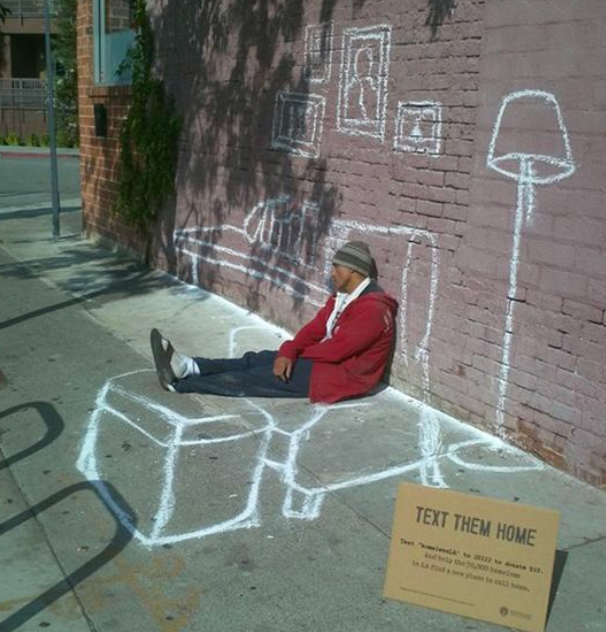
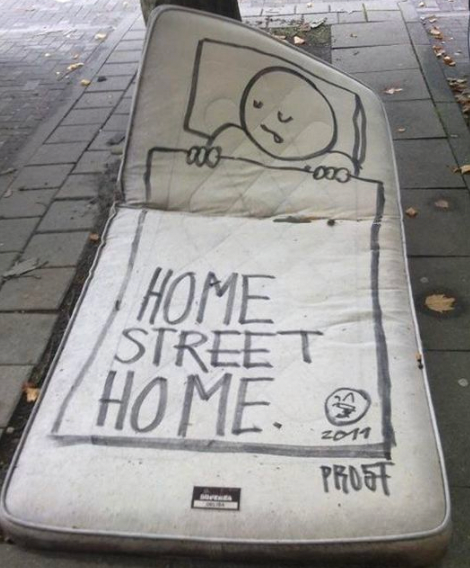

Whats the call to action?
- Call the audience to the resource/response programs on SJ website
- We want to make sure people understand what they can do and what their options are in ways of helping
- Emphasize the available resources that people can take and not feel helpless
- Homeless Hotline, give housed residents knowledge on how to help the homeless and motivate them to take action.
- End goal is providing knowledge for all communities
- Qr code, url, address
Campaign ideas:
1. Campaign focusing on highlighting the effectiveness of the homelessness response team. Being transparent with the process the team goes through and the methods they use, showing how easy and effective it is to provide help through provided resources. Showing the results of the response team and help initiated by community members. Evidence could either be statistical data(ex. After homelessness response team was instated, x% of unhoused population was able to get resources) or individual testimonials(ideally for 1 person who received help and another who initiated the hrt by calling the hotline). Focus on these graphics would be the headline + logo, address, phone number + qr code to resources + call to action
2. A potentially effective campaign to combat the stigma surrounding homelessness could focus on portraying individuals who are homeless in a more relatable light. It would feature people from various backgrounds and circumstances, such as those living in cars, on the streets, or experiencing homelessness for different durations. The main objective of this campaign would be to challenge negative perceptions and encourage empathy and assistance for those facing homelessness. Using compelling visuals, the campaign would showcase individuals holding up signs with short, personal messages that convey their unique identities and interests. These messages would emphasize that homeless individuals are complex individuals with passions and talents. For instance, messages might include "I used to create robots" or "I was a dedicated figure skater." By highlighting the humanity and diversity within the homeless population, the campaign aims to foster understanding and support among the public. Ultimately, the campaign seeks to shift public attitudes towards homelessness, encouraging people to see individuals experiencing homelessness as deserving of compassion and assistance rather than viewing them solely as a societal problem. Through storytelling and relatable messaging, the campaign aims to inspire action and empathy towards addressing homelessness and its root causes. Would also promote individuals to reach out and take action.
BIG IDEAS & Headline ideas
- Diverse journeys, shared humanity
- Breaking barriers, building bridges
- Lets change the narrative
- Lets rewrite this story
- Rewrite their/your story
- It doesn't end here
- Help for you and your best friend
- Brighter futures start here
- Who can I turn to?
- Giving faces to the forgotten
- Hope in action
- Streets to sanctuary
- In kindness we thrive
- No one left behind
- Home starts here
- Theres a bed for everyone
- Lets give our heroes homes
- Another night on another's couch?
Example journey for graphics:
- Couch-surfing college students
- Veteran
- Has a degree
- Parent
- Has a pet
- Elderly
Style Guide
FINAL CAMPAIGN
Tagline: Diverse Journeys, Shared Humanity (inspired by concept: following the journeys of various homeless individuals with the goal of shedding light on the shared humanity that unites us all despite the diversity of our paths)
In this fast-paced world, where everyone is too focused on their own thing it becomes too easy to overlook the struggles of homeless individuals.
We've become desensitized to walking through places where other human beings, just like us, are suffering, often without a second thought.
Society has sadly grown accustomed to ignoring and dismissing them as if they were not fellow human beings deserving of empathy and compassion.
Our mission is to humanize homelessness by touching people's hearts with emotion. We seek to convey that those experiencing homelessness are not the problem, but are really just victims of circumstances. Our aim is to portray them for who they really are, individuals with their own humanity and struggles, rather than simply labeling homelessness as a community-wide issue.
Our goal is twofold: to reach (through empathy) and inform the general public about how and where they can help the homeless, and to directly reach homeless individuals, equipping them with information on accessing assistance and resources for themselves
Our graphics will feature images of homeless individuals, but behind each ad lies a story—a narrative that not only raises awareness about the subject but also aims to enable others to relate and empathize with their experiences. Through these stories, we hope to shed light on the human faces behind homelessness and inspire compassion and understanding in our audience.
Our Graphics

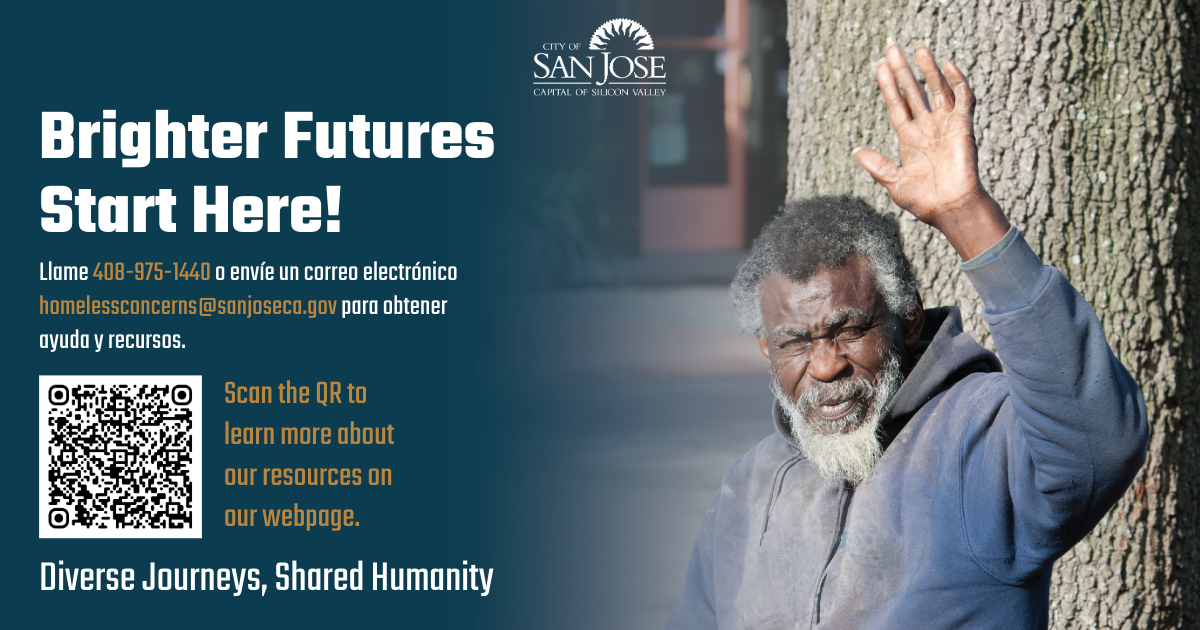
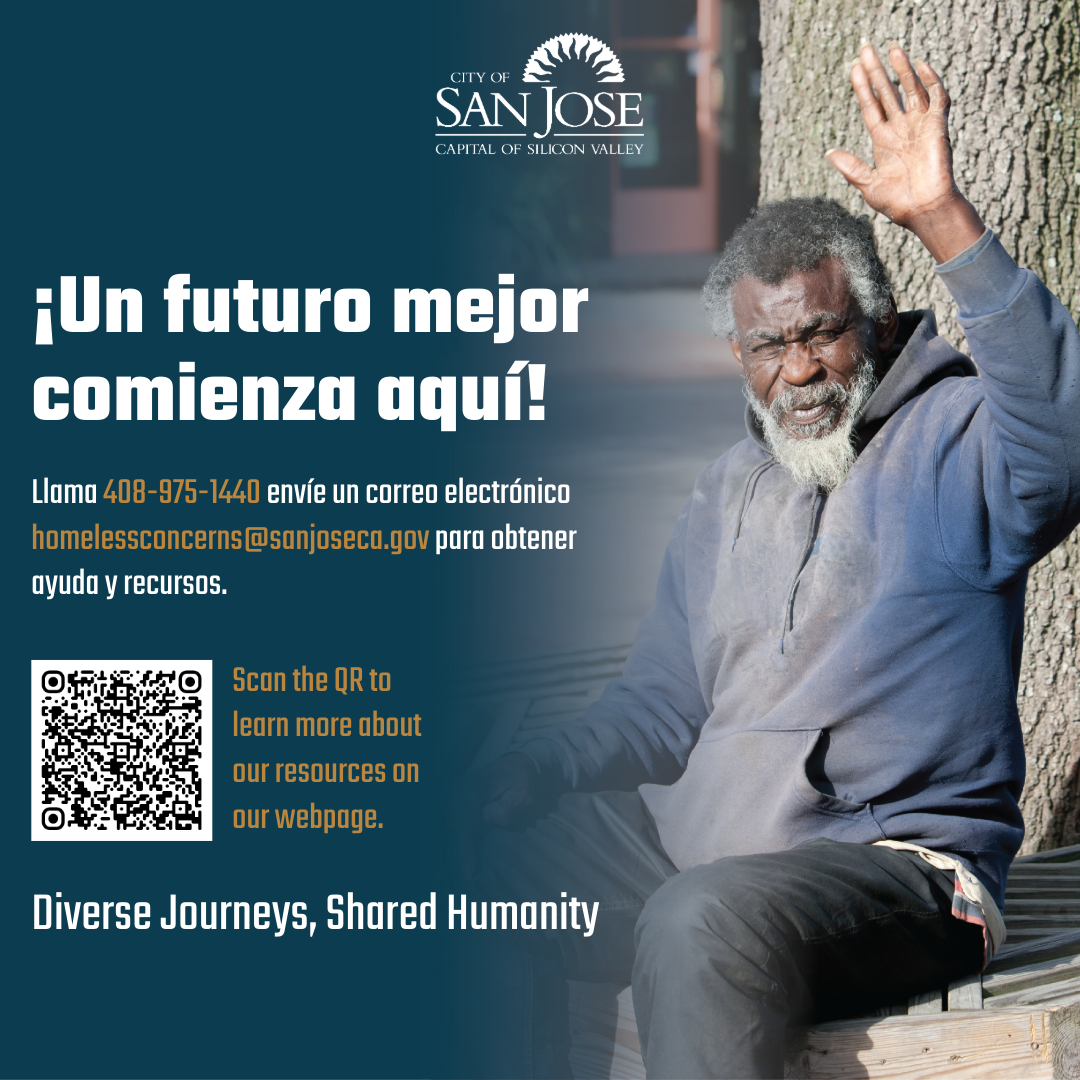


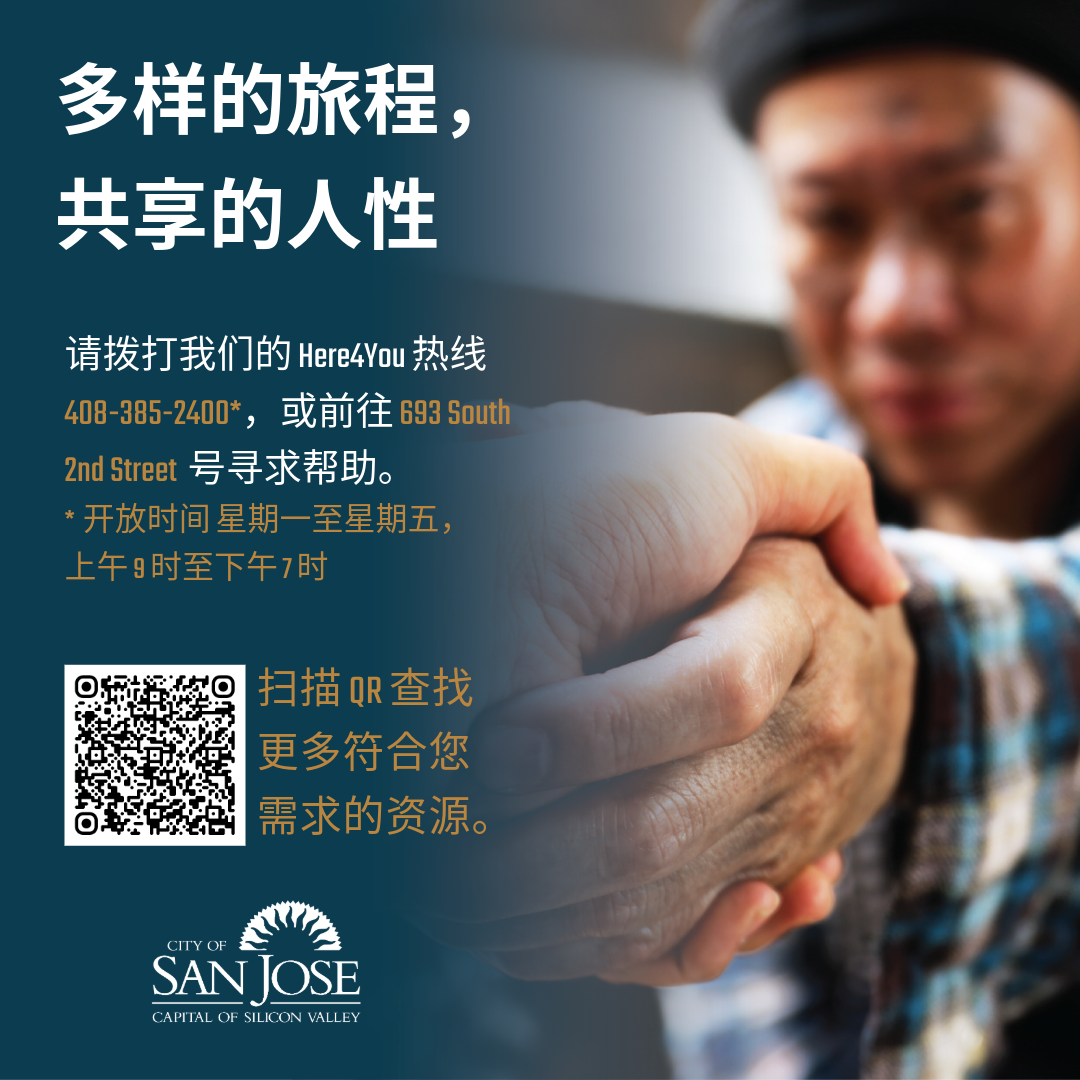
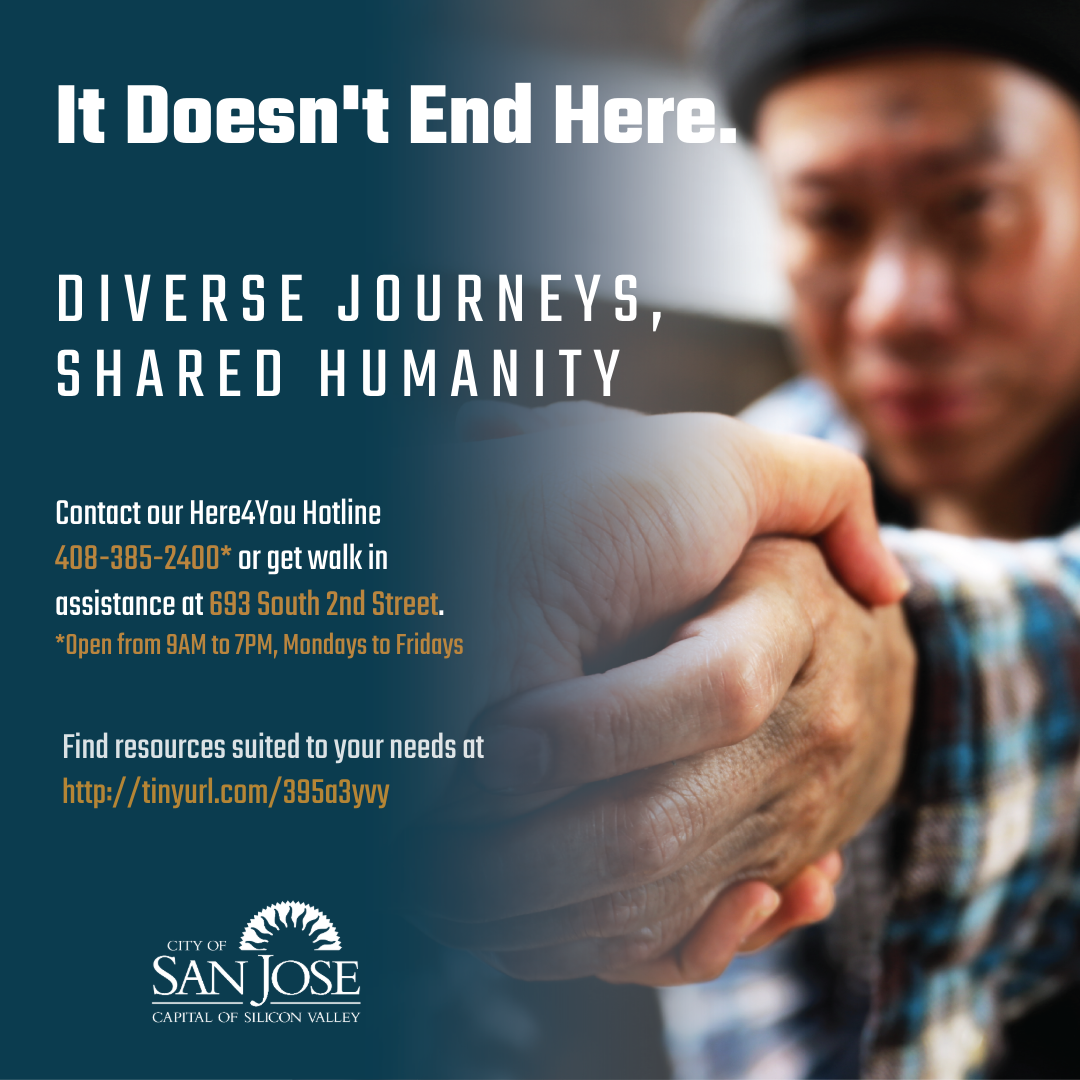
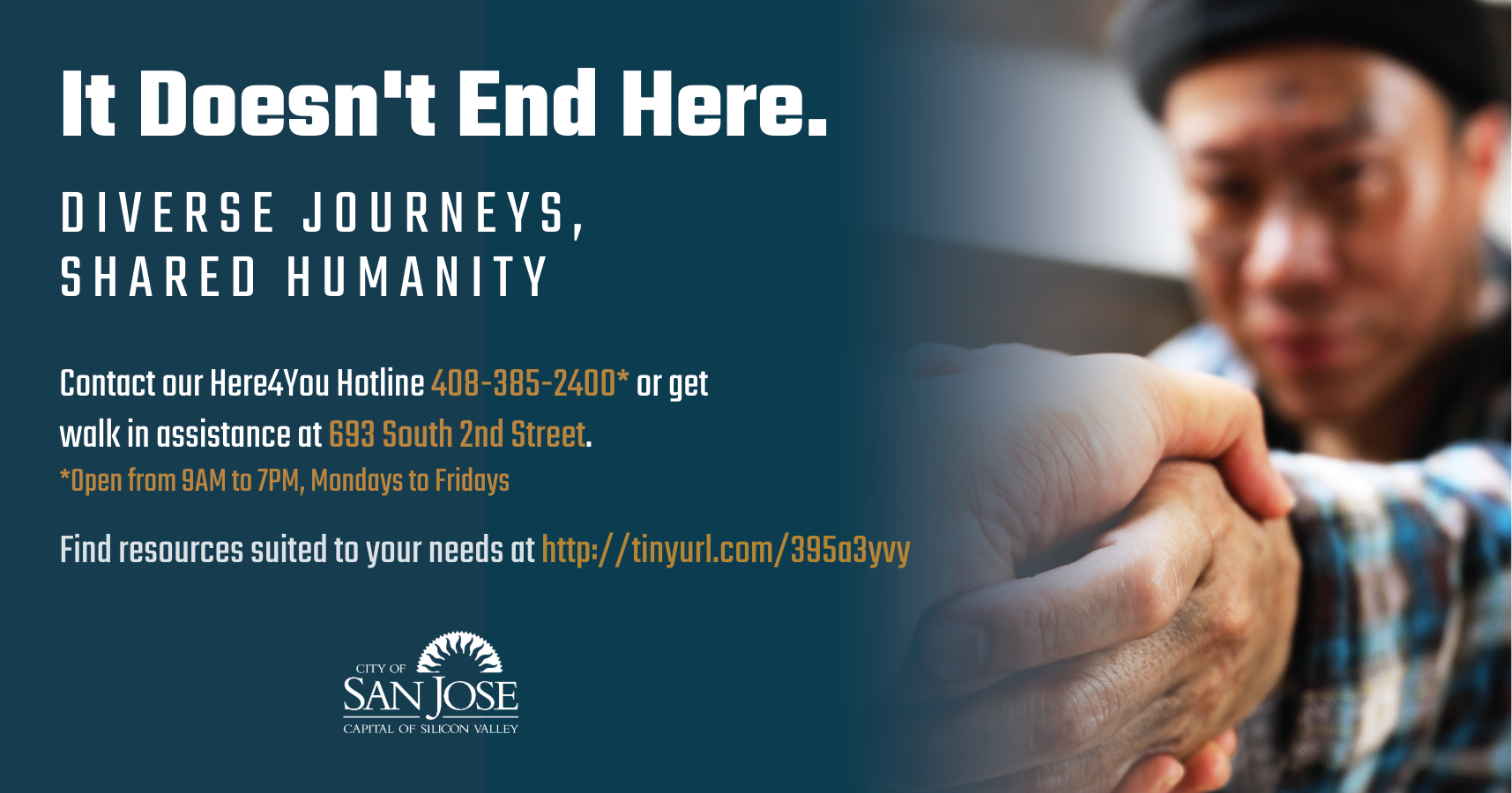



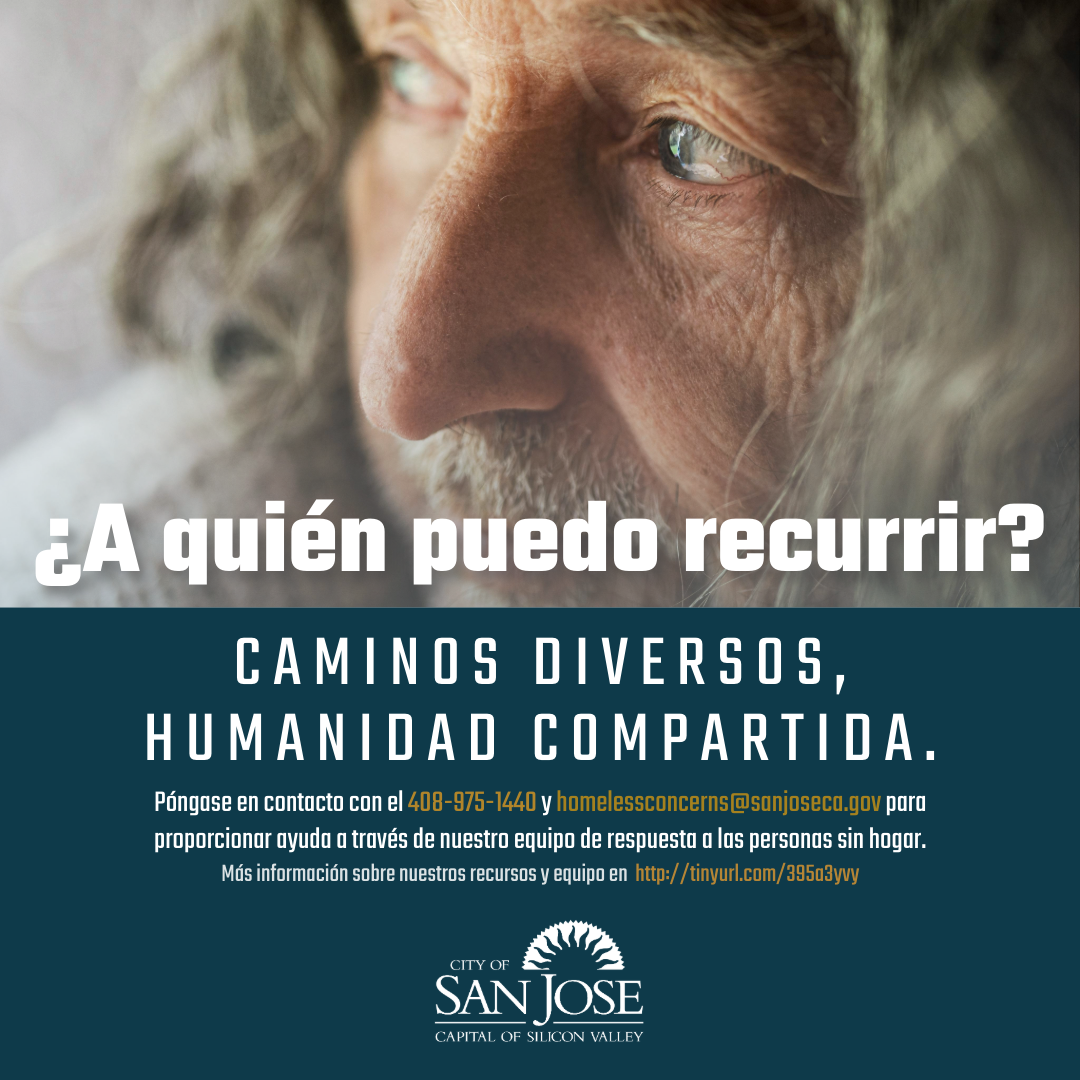


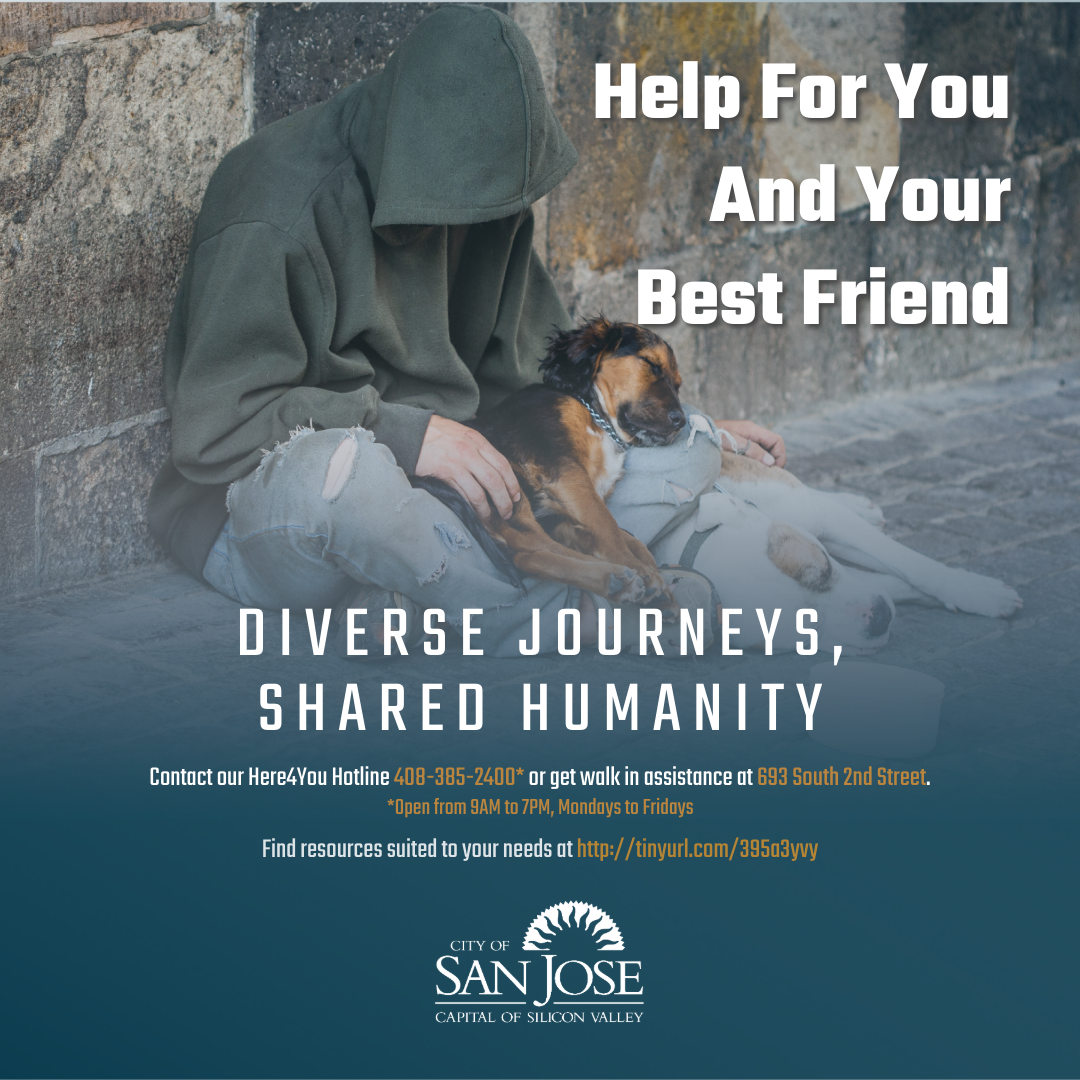

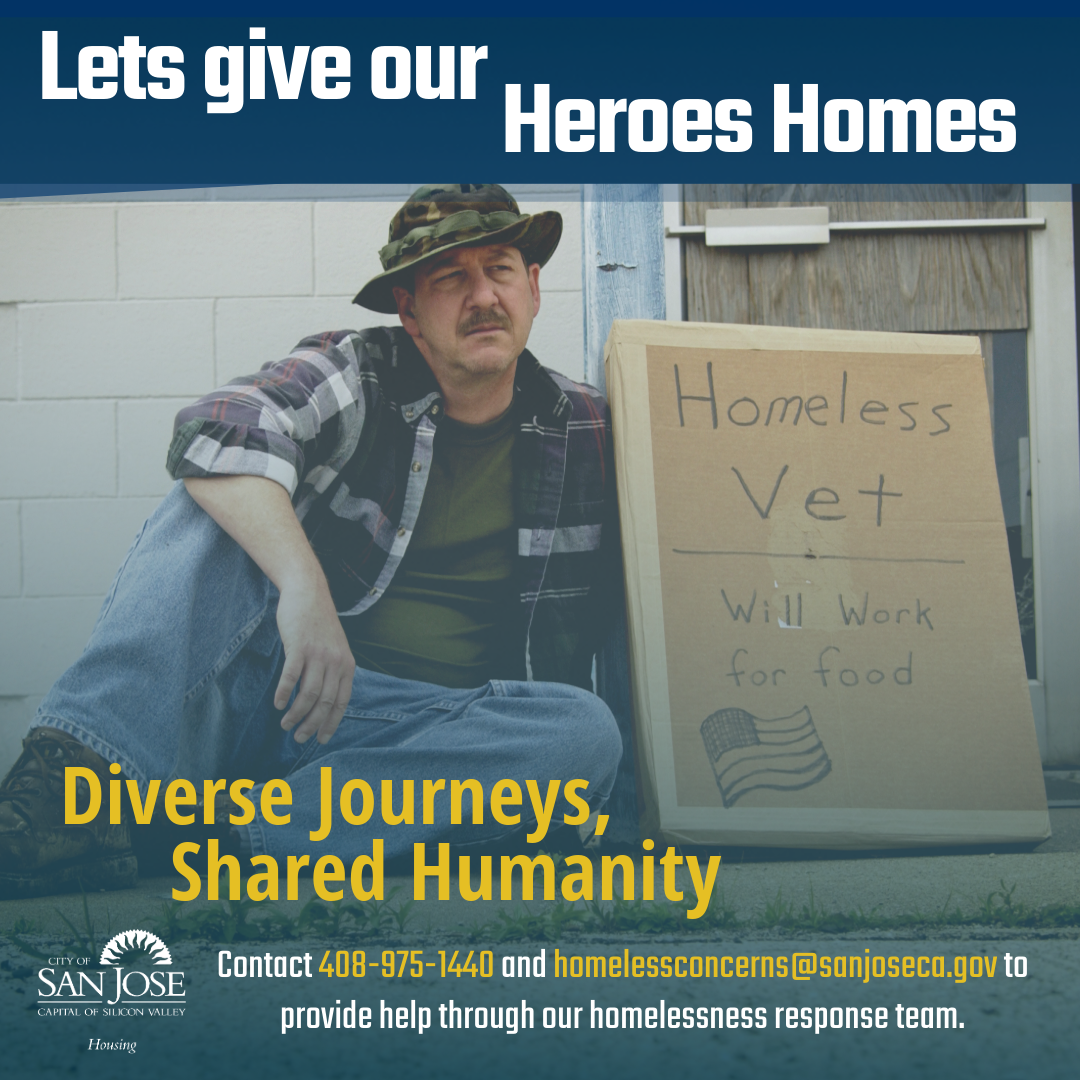

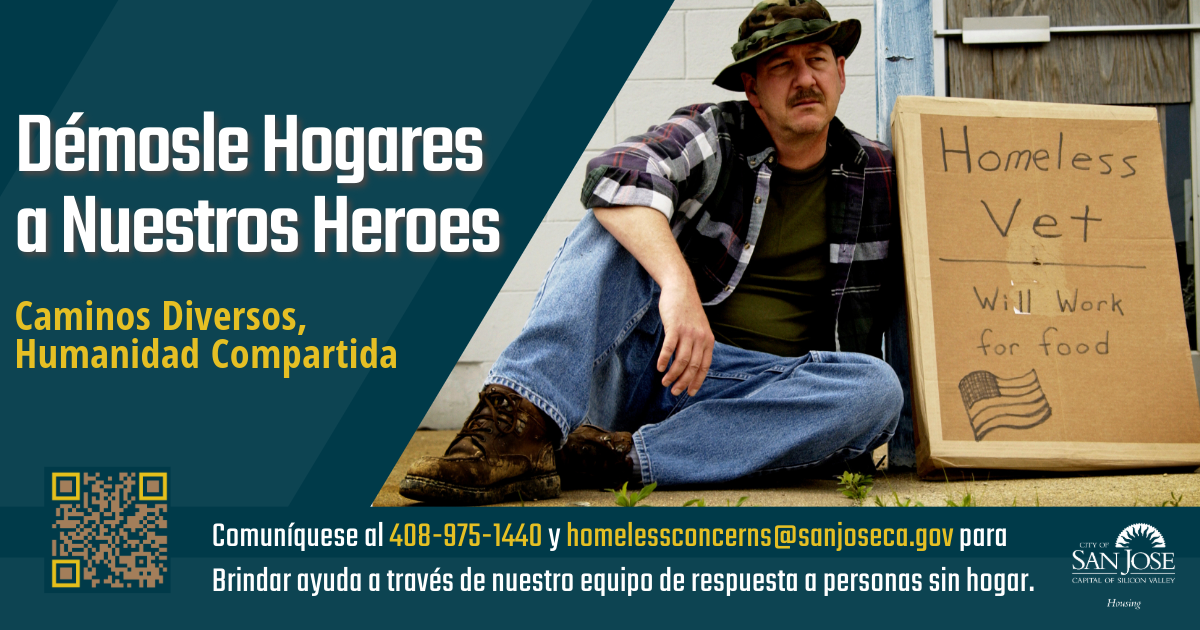
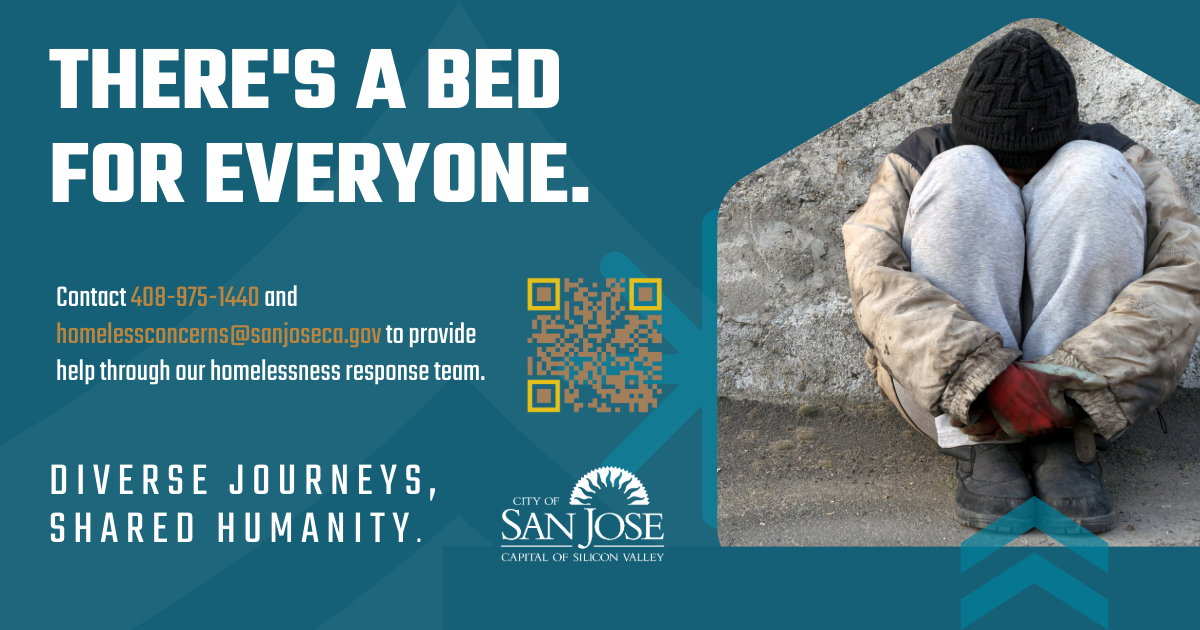
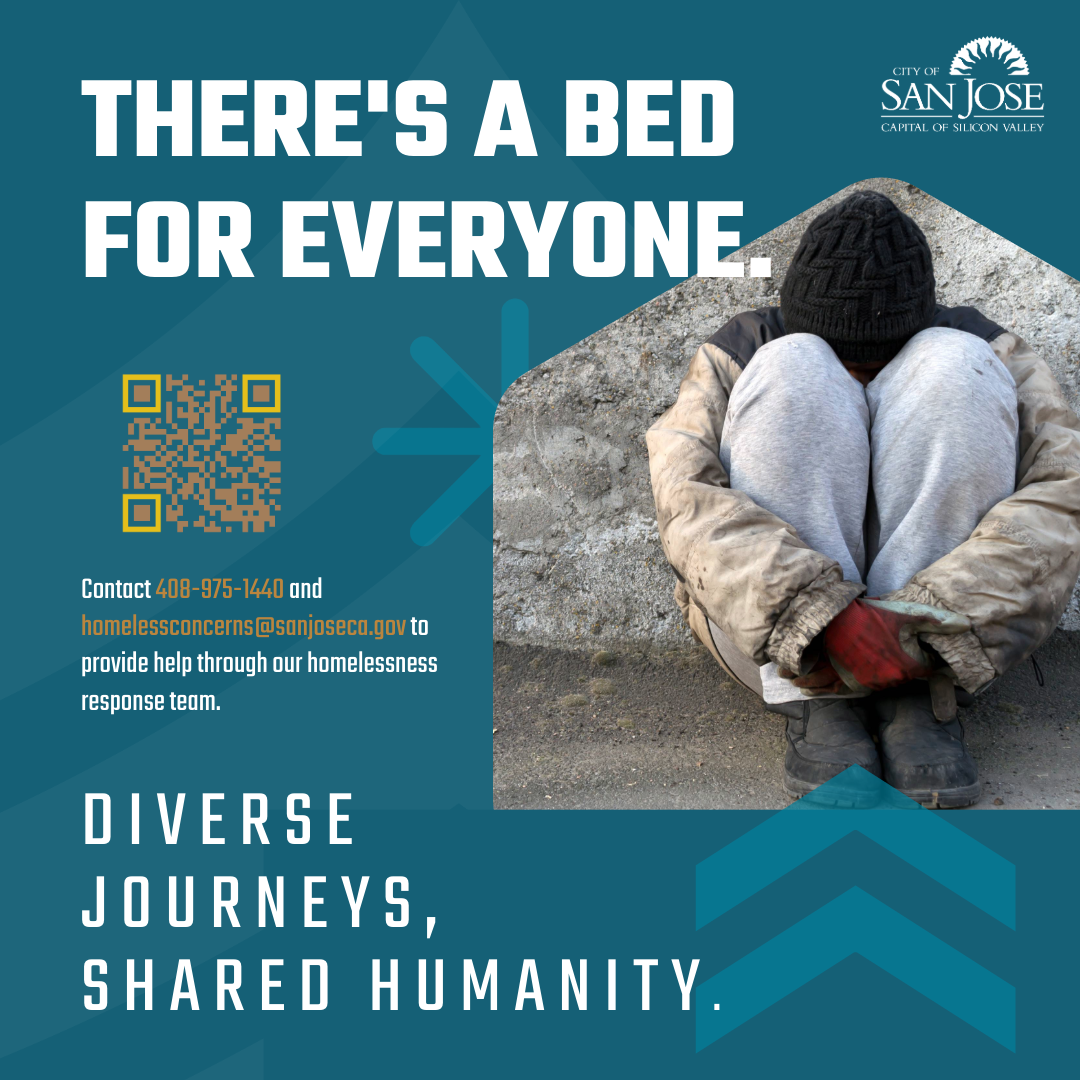
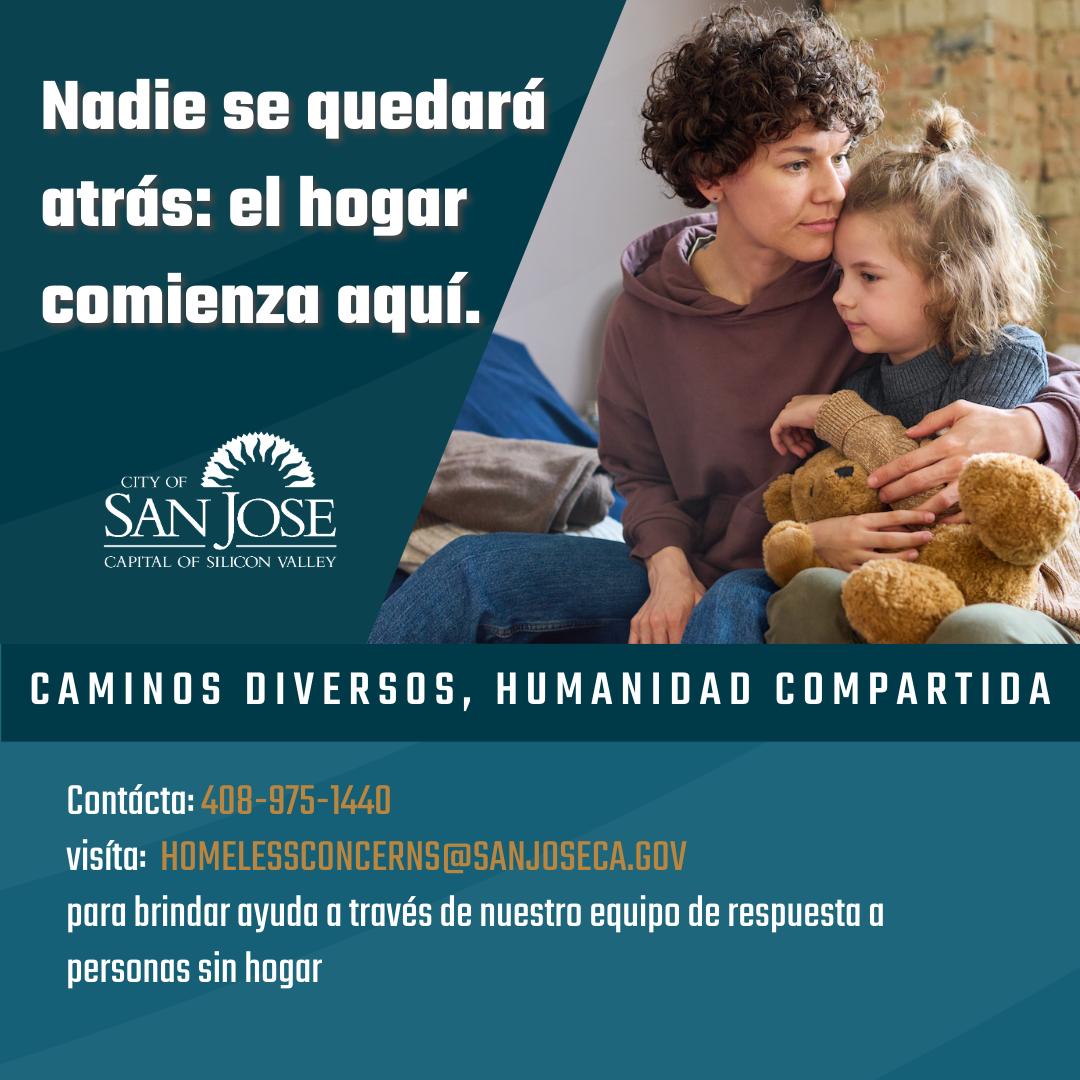


The Stories Behind
- Jose thought his degree would have saved him from a life on the streets.
- Cynthia spends her day sleeping in her car before her night shift.
- Every night of finals week Sean was sleeping on a different person’s couch.
- Each night Michelle falls asleep desperately holding her dog for warmth.
- Tony had just graduated with a BA in computer science into one of the worst recessions in decades. A first generation graduate Tony was a shining star of hope for his family. After spending the last five years studying day and night for his classes he was met with a tragedy he could not control. With nowhere to turn Tony was forced to live on the streets to survive. Through the services provided by the City of San Jose he is now housed and employed full time. The City of San Jose recognized the unique challenges you face and offers aid to those in need. Together let's embrace our diverse journeys and shared humanity.
- From a home and job to homelessness, Maria's journey seemed shattered. Yet, in the heart of San Jose, she found sanctuary. With her daughter by her side, they discovered a beacon of hope through the city's shelter services. With help from the community, Maria rose from adversity, embodying the spirit of unwavering strength. In the embrace of her newfound home, she experienced the true essence of a dream made real - the promise of a brighter dawn amidst the darkest of nights
- In the throes of adversity, Alex, a 22-year-old, grappled with homelessness and addiction following a devastating job loss. Lost in the shadows of despair, he wandered the streets of San Jose, searching for solace amidst the chaos of his shattered dreams. But amidst the turmoil, a glimmer of hope emerged - a lifeline offered by the City of San Jose's outreach programs. With trepidation and desperation intertwined, Alex reached out, craving redemption amidst the wreckage of his past. In the warmth of compassionate hands, Alex found sanctuary - a place to rest his weary soul and lay his burdens to rest. Through the city's unwavering support, he discovered not just shelter, but a pathway to reclaim his dignity and rebuild his life anew. Day by day, Alex confronted the demons of addiction with unwavering resolve. Guided by the steady hands of compassion, he embarked on a journey of self-discovery, determined to carve a future illuminated by possibility. In the heart of San Jose, amidst the bustling streets and towering skyscrapers, Alex found not just refuge, but the transformative power of hope. For in the embrace of a city that refuses to turn its back, he discovered the true essence of redemption - the promise of a second change, writ large against the canvas of his dreams
PRESENTATION SLIDES

